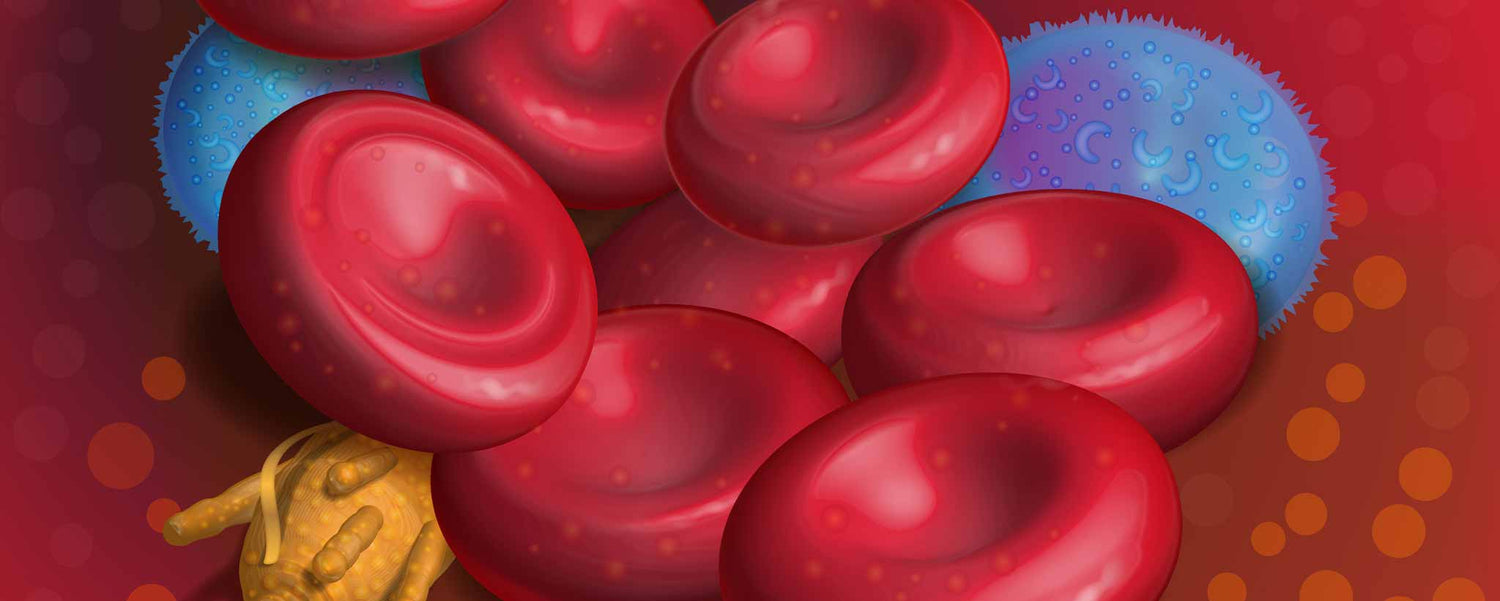A rare triple-threat anemia can deplete each major blood component, reducing energy, decreasing lung and heart function.
Publish 23 November 2021
Common Symptoms, Rare Cause
Typical of many disease symptoms, you are pale, cold, and often tired. You might also be experiencing spontaneous bleeding from the nose or gums. Cardiopulmonary complications can develop. Bruises following minor injury do not heal promptly and you may be susceptible to many bacterial and fungal infections.
With these symptoms, the cause may be a rare disorder called acquired aplastic anemia. It is also known as idiopathic aplastic anemia or immune aplastic anemia.
General anemia is a common symptom of many disorders. A low number of oxygenated red blood cells manifests with tiredness and pallor. Massive blood loss, nutritional imbalance, or other medical conditions can be the cause.
With acquired aplastic anemia, there is almost complete absence of hematopoietic stem cells that produce mature blood cells. It appears that in place of the bone marrow, there is fat. This results in low levels of red blood cells, white blood cells, and platelets (pancytopenia). Since all three blood components are formed in the bone marrow, treatment aims to restore bone marrow function via transplant and/
Restore Bone Marrow Function
Stem cell and bone marrow transplant are prone to rejection. Doctors suspect the body’s natural immune system may be attacking the bone marrow. Thus, immunosuppressive therapy for this autoimmune disorder can restore proper blood count near normal levels.
Immunologists must repeat this temporary procedure as relapses of aplastic anemia occur. An individual who successfully responds to immunosuppressive therapy is still at risk of eventually developing paroxysmal nocturnal hemoglobinuria, myelodysplasia, or leukemia.
Acquired aplastic anemia affects 2 out of 1 million people per year in Europe and Israel, 5 out of 1 million in Asia, and there are 500–1000 annual cases in the United States. As a rare disease, detection is possible with a blood test performed during routine physical examinations.
Doctors must distinguish it from a rare group of other blood disorders with additional testing. Contact the NORD (National Organization for Rare Diseases) for more information and clinical trials.
There is no need to assume that you have a rare disease because you are tired or manifest a few other symptoms. This information underscores the advantage of regular cardiology checkups over self-diagnosis.
To support the writing of scholarly articles about cardiology, ClinicalPosters sells human anatomy charts, scientific posters, and other products online. You may sponsor specific articles or remit a small donation.
ClinicalPosters sells human anatomy charts, scientific posters, and other products online to offset expense of the writing useful articles about cardiology. Slide extra posters into DeuPair Frames without removing from the wall.
Show your support by donating, shopping for ClinicalPins, or leaving an encouraging comment to keep the research going.
To support the writing of useful articles about cardiology, ClinicalPosters sells human anatomy charts, scientific posters, and other products online. You may sponsor specific articles or remit a small donation.
ClinicalPosters sells human anatomy charts, scientific posters, and other products online to offset expense of the writing useful articles about cardiology. Slide extra posters into DeuPair Frames without removing from the wall.
ClinicalPosters sells human anatomy charts, scientific posters, and other products online. You may remit a small donation.
You can support the writing of useful articles about cardiology by sponsoring specific articles or remitting a small donation.









 Romance & Health Intertwine. Fall in love with a captivating romance miniseries that explores the essence of well-being. Become a ClinicalNovellas member for heartwarming tales.
Romance & Health Intertwine. Fall in love with a captivating romance miniseries that explores the essence of well-being. Become a ClinicalNovellas member for heartwarming tales.




